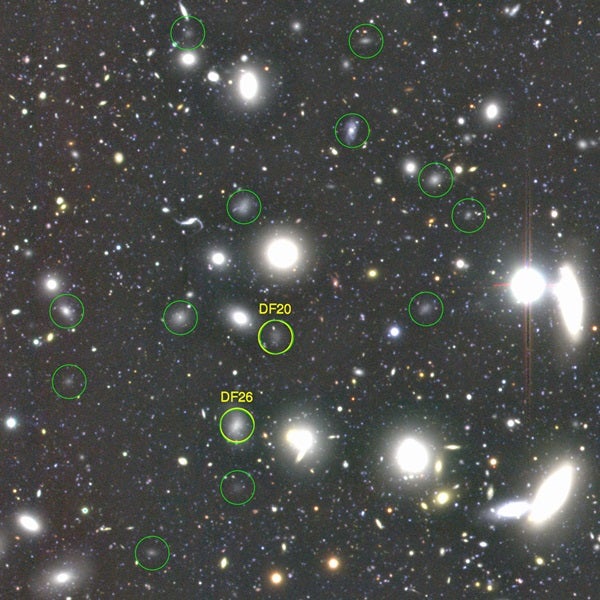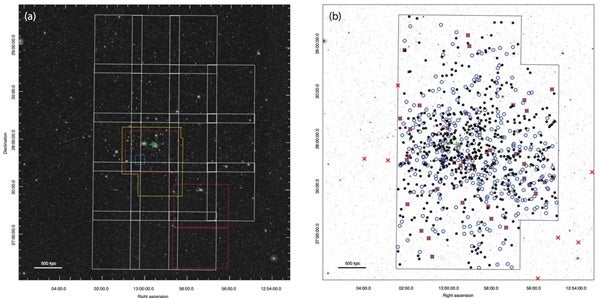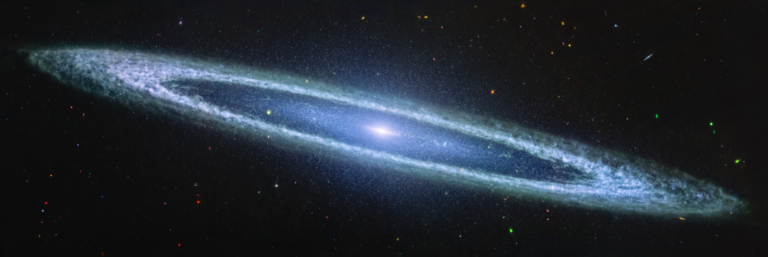These galaxies appear diffuse and remarkably extended as seen by the light of the stars they contain. Many are similar in size to the Milky Way but have only 1/1,000 of the stars that our galaxy does. The stellar population within such fluffy extended galaxies is subject to rapid disruption due to a strong tidal force detected within the cluster. Something invisible must be protecting the fragile star systems of these galaxies, something with a high mass. That “something” is likely an excessive amount of dark matter. The component of visible matter, such as stars, is calculated to contribute only 1 percent or less to the total mass of each galaxy. The rest — dark matter — accounts for more than 99 percent.
The Subaru Telescope with its large aperture and wide-field camera, used under excellent seeing conditions, revealed that these dark galaxies contain old stellar populations and shows a spatial distribution similar to those of other brighter galaxies in the Coma Cluster. That suggests they have been a long-lived population of galaxies within the cluster. The amount of visible matter they contain, less than 1 percent, is extremely low compared to the average fraction within the universe.
(Left) An image from the Digitized Sky Survey (from a digitized photo-plate). Eighteen white squares are the coverage by the Subaru Telescope with the R-band filter. Red and yellow parts were observed in multiple bands with Subaru, which enabled the study of galaxy colors. The light blue region is the area in Figure 1.
(Right) The distribution of the newly found dark galaxies. Blue circles indicate the ones of particularly large sizes (roughly the size of the Milky Way galaxy even though the total light is only 1/1,000 of the Milky Way).
These dark galaxies may offer another insight into the model of galaxy formation. However, according to Jin Koda more work needs to be done to understand them and their place in the standard picture of galaxy formation. “Follow-up spectroscopic observations in the future may reveal the history of star formation in these dark galaxies,” he said.
In addition to research into galaxies’ stellar populations, further investigation of the large dark matter component of the galaxies is essential. Dark matter is invisible, but measurements of stellar motions may expose the distribution of dark matter in these galaxies. Such a dream measurement may not be immediately possible because they are so faint. It is difficult to measure the detailed motions of stars even with the Subaru Telescope. The construction of the Thirty Meter Telescope by an international partnership of institutions, including the National Astronomical Observatory of Japan, may well reveal the mystery of the dark galaxies in the near future.











